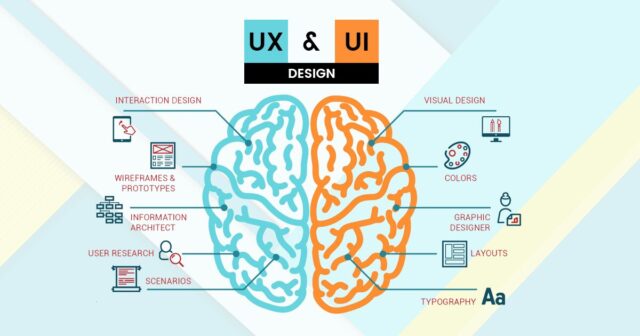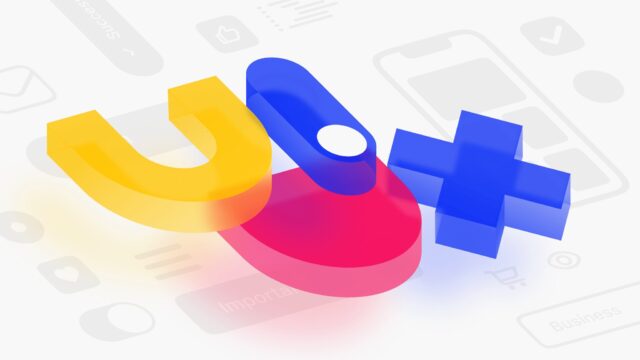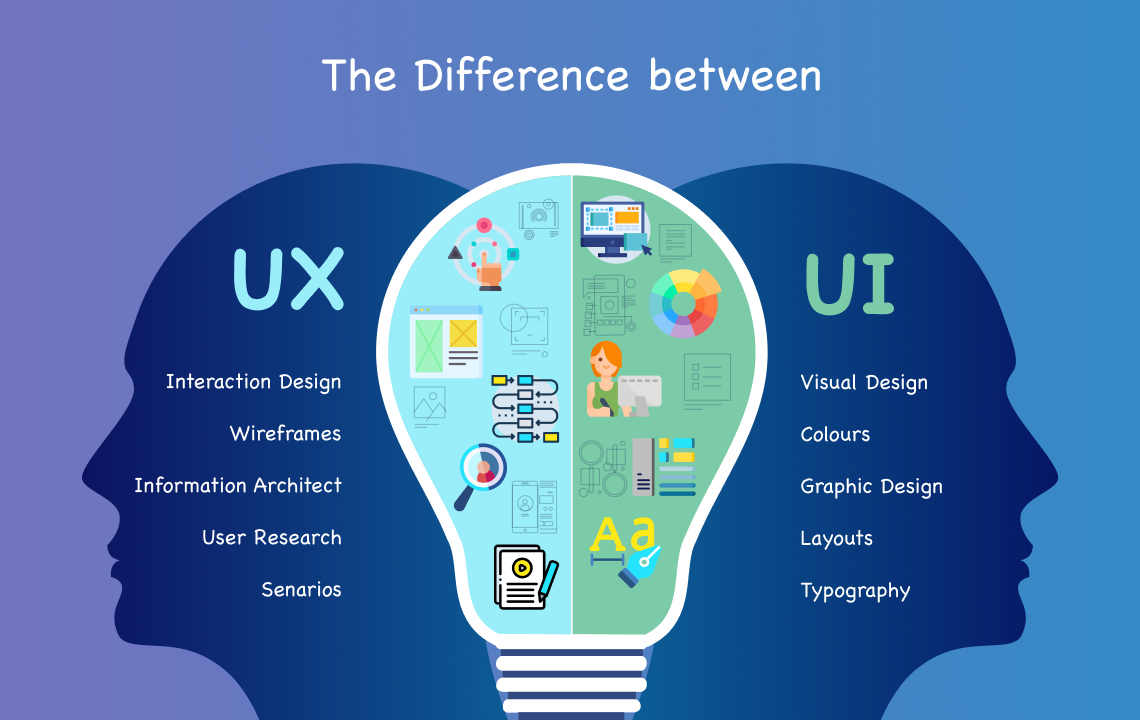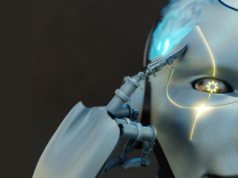
User Interface (UI) is the tangible part of a digital product that users interact with. This encompasses the visual design elements such as the layout, buttons, icons, and text style seen in an app or a website. The primary focus of UI is on the look and feel of the product’s surface, ensuring that it is not only visually pleasing but also user-friendly and navigable.
User Experience (UX), in contrast, dives into the broader spectrum of the user’s interaction with the product. It goes beyond just how the product looks, addressing how it operates and fits into the user’s life. UX is an expansive field that covers the ease with which users can complete tasks, their satisfaction with the process, and the overall efficiency of the product. This involves an iterative process of research, testing, and refining to create an experience that’s not just visually appealing but also intuitive and rewarding to use.
Though UI and UX have distinct focuses, they are inextricably linked and equally vital in the development of a digital product. They work in tandem to ensure a product is both aesthetically appealing and functionally effective. This article aims to provide insights into the unique roles and responsibilities within the UI and UX domains, offering guidance on selecting the most fitting UI/UX consulting services from companies like Evrone.
The Art of Interface: Unraveling UI

Defining User Interface (UI)
User Interface (UI) is a blend of visual artistry and practical functionality that forms the gateway through which users interact with digital products. It’s the collection of on-screen menus, buttons, icons, and the overall layout that dictates how a product is navigated and used. UI is not just about creating something that looks attractive; it’s about providing a seamless, intuitive interface that aligns with the expectations and needs.
The Role of a UI Designer
A UI designer’s task is multifaceted, blending creativity with an acute understanding of usability. Their primary responsibility is to design interfaces that are aesthetically pleasing and align with the product’s brand identity. They focus on creating a visual language for the product, which includes choosing color schemes, font styles, and the overall layout of the interface.
But UI goes beyond just the visual aspects. UI designers must also ensure that the interface is functional and user-friendly. They work on the responsiveness of the interface, ensuring that it adapts to various devices and screen sizes. Their role involves collaborating with UX designers and developers to ensure that the visual design aligns with the overall experience and technical feasibility.
Essential Skills for UI Designers
They are expected to possess a specific set of skills that enable them to create effective and appealing interfaces. These include:
- Visual skills. A strong grasp of design principles such as color theory, typography, and layout is fundamental.
- Interactivity and responsiveness. Understanding how to design for different devices and screen sizes is crucial.
- Prototyping and wireframing. Skills in tools like Sketch or Adobe XD for creating prototypes and wireframes are essential.
- Collaboration and communication. UI specialists must effectively communicate their ideas and work collaboratively with UX specialists, developers, and other stakeholders.
- Attention to detail. A keen eye for detail is necessary to ensure every visual element aligns with the overall design.
The Journey Beyond the Screen: Decoding UX

Understanding User Experience (UX)
User Experience (UX) is a comprehensive term that defines the overall experience a user has with a digital product. It goes beyond the visual aspects, encompassing emotions, perceptions, and responses to a product from the moment they start using it. UX is about crafting an experience that is not only efficient and intuitive but also delightful and engaging. It’s the art and science of making the user’s journey through a product as smooth and satisfying as possible.
The Role of a UX Designer
They are the architects of this journey. Their primary focus is on satisfaction, aiming to make products not only usable but also enjoyable. Their responsibilities include:
- User research. Understanding the target audience, their needs, behavior, and pain points through methods like surveys, interviews, and usability testing.
- Information architecture. Organizing content and information in a way that’s intuitive to the user, ensuring easy navigation.
- Interaction design. Crafting the interactive elements of a product, focusing on how users engage with it.
- Prototyping and testing. Developing prototypes to test designs and improve upon them based on feedback.
Essential Skills
A competent UX specialist should possess a diverse skill set, including:
- Empathy. The ability to understand and share the feelings of the user is crucial.
- Problem-solving. UX is about finding solutions to challenges, requiring strong analytical and problem-solving skills.
- Technical knowledge. Understanding the technical possibilities and limitations is important.
- Collaboration. UX specialists often work with UI ones, developers, and stakeholders, making teamwork skills essential.
- User-centered principles. A deep understanding of usability and accessibility standards.
UX Design vs UI Design

In the realm of digital product development, understanding the distinction between UX (User Experience) and UI (User Interface) is pivotal. Though these roles often work closely together and share the ultimate goal of creating a great product, their paths and responsibilities diverge significantly.
Key Differences
Focus area:
- UX is concerned with the overall feel of the experience, focusing on how something works and how people interact with it.
- UI, in contrast, is about how the product’s interfaces look and function. It deals with the specific interface elements users interact with.
Process and tasks:
- UX Designers are involved in the process from concept to delivery. They conduct user research, create personas, wireframes and prototypes, and test them for usability.
- UI Designers take these wireframes and bring them to life with visual elements. Their tasks include choosing color schemes, typography, button shapes, and implementing interactive elements.
Skill sets:
- UX Designers require skills in user research, psychology, and analytics. They need to be adept in areas like information architecture and testing.
- UI Designers should have a strong background in graphic design and familiarity with software for creating visual elements. They also need a keen eye for aesthetic detail.
Collaboration between UX and UI Designers
This collaboration is integral to the process:
- Shared understanding. Both UX and UI designers need to have a shared understanding of the product’s goals and target audience. This mutual understanding guides their decisions.
- Iterative process. The UX team’s research and wireframes inform the UI team’s choices. As the UI team implements visual elements, feedback from the UX team ensures these elements align with the user’s needs.
- Communication and feedback. Continuous communication is essential. Regular meetings and feedback sessions help synchronize the UX and UI efforts, ensuring a cohesive and user-friendly final product.
- Complementary roles. While UX designers focus on the product’s functionality and usability, UI designers ensure that this functionality is accessible and aesthetically pleasing. Together, they ensure that both the usability and the visual aspects of the product are aligned with the user’s needs and preferences.
Bringing It All Together: The Synergy of UI and UX

In conclusion, the difference between UI and UX design is distinct yet harmonious. While UI focuses on the visual aspects of a product’s interface, UX encompasses the overall feel and functionality of the user’s journey. Both disciplines are essential in crafting a digital product that resonates with users, combining aesthetic appeal with practical usability.
The collaboration between UI and UX designers is not just beneficial but necessary for the creation of successful digital products. By understanding the unique roles and contributions of each, companies like Evrone can develop products that are not only visually stunning but also deeply attuned to user needs and behaviors.
As we continue to advance in technology and user expectations, the fusion of these two disciplines will remain a cornerstone in the creation of innovative, user-centric products. By keeping the user at the heart of the design process, UI and UX designers together pave the way for digital experiences that are both memorable and impactful.









